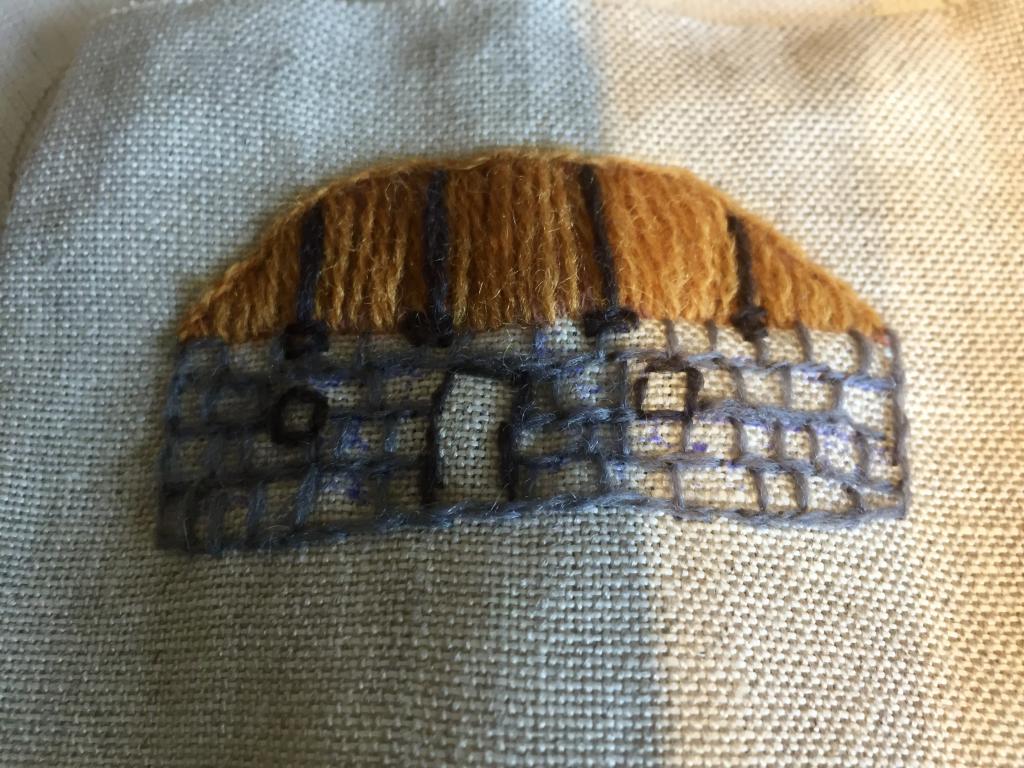
Black House (Taigh-Dubh)
By Cathy Valle
 The Black House, taigh dubh - an icon of Scottish architecture
The Black House, taigh dubh - an icon of Scottish architectureImage provided by Cathy Valle
Black Houses were built with a double wall packed out with earth. The straw or turf roof was secured with old fishing nets or twine and tied down with ropes attached to large rocks to withstand strong winds. The floors were usually flagstones, there would be a central fireplace and the house would be shared by both animals and people living at opposite ends. Although probably based on much older dwellings the Highland houses were generally built between 1852 and 1895.
Many thanks to Cathy Valle for sharing with us the story behind her journey stone, created as part of the Tapestry of the Highlands and Islands.
WHAT IS A JOURNEY STONE?
Prior to the beginning of the stitching of each tapestry panel, each stitcher of the Tapestry of the Highlands and Islands was tasked with telling their interpretation of the 'Spirit of the Highlands and Islands' within a blank outline of a stone. The possibilities were truly endless - is it represented in the land? The people? A historical site? A favourite memory?
In any case, each journey stone represents the connection between each individual stitcher, their story, and their own sense, or 'spirit', of place. Discover more of the stories behind the journey stones of the Tapestry of the Highlands and Islands here.